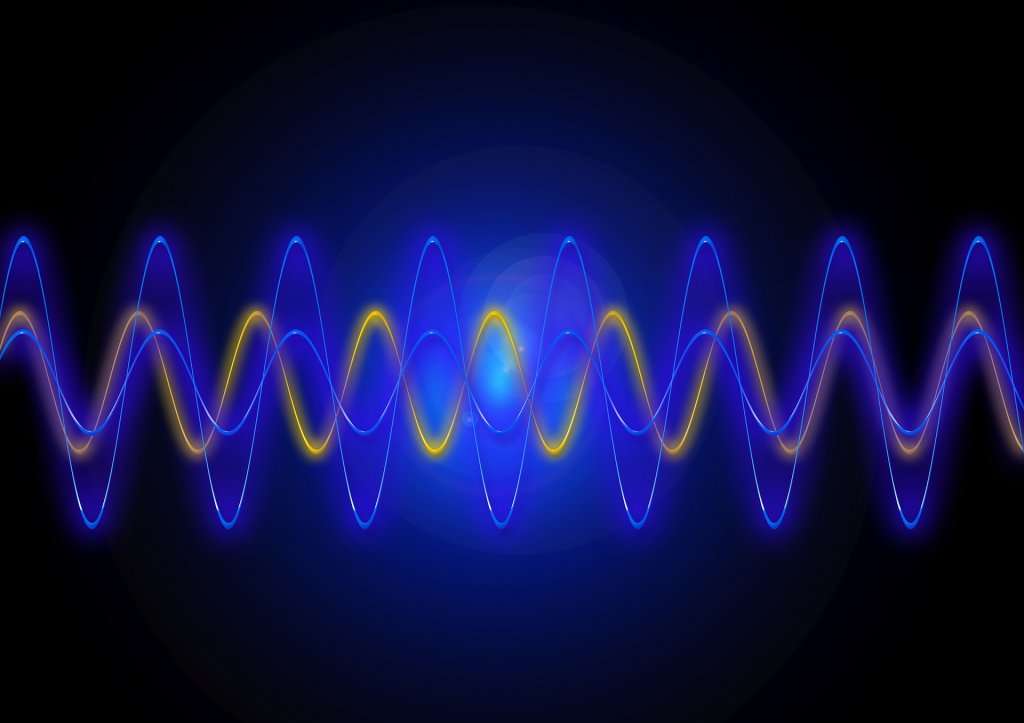From a Hyperacusis Patient to Audiologists: My Advice for Better Patient Care
Hyperacusis is a very disabling auditory disorder. Today, its management is still considered difficult, as there is no cure. This article describes my own experience with hyperacusis. I developed this condition after being exposed to high-level sounds during a concert, and am sharing my views and experiences on how the assessments are performed, on how I have experienced some therapies, and on how management could be improved. Even if my opinion only reflects my personal case and cannot be generalized, I believe that healthcare professionals in general, and more specifically audiologists, will appreciate some of the elements of my story and may integrate some of the advice into their clinical practice.
The Triggering Event

My hyperacusis developed about 10 years ago after enjoying a concert where the sound level was very high. Immediately after the concert, I experienced hearing loss, loud tinnitus, and moderate hyperacusis. The experience of hyperacusis can be best described, as an exaggerated increase in loudness of the most ordinary sounds, for example, the sounds of dishes. A few hours after the concert, I went to see an ENT doctor. The doctor saw an uncommon inflammatory syndrome of my right eardrum and measured a slight hearing loss in the high frequencies for this ear. A 10-day corticosteroid treatment allowed me to completely recover from hearing loss and almost eliminate my tinnitus. Within a few months after the concert, the hyperacusis had almost completely disappeared and without any medical intervention. Unfortunately, a few years later, the hyperacusis reappeared following a second loud event.
The Assessment
Almost all my consultations with a hearing healthcare professional included the measurements of loudness discomfort levels (LDL). It is obvious that this test can be a very painful experience for a patient with hyperacusis if not carried out with proper care. I would advise against measuring the sound pain threshold and would recommend starting the LDL test at very low intensity sounds. It has been shown that LDL poorly reflects the functional impact of the condition on a patient life: a patient with a very disabling hyperacusis condition can sometimes have near-normal LDL. I would suggest that including standardized questionnaires or a visual analogue scale in any hyperacusis evaluation in order to assess its functional impact would be a good step.1–3
Unfortunately, these types of questionnaires were not administered to me when I first met with hearing specialists. It seems to me that those subjective measures are essential as they give more consideration on what the patient is living with and the impact on their personal and professional life – their use may help the patient feel better understood by the clinician.
More so, there are other diagnostic tests that require a fairly high sound level such as tympanometry and that can be very unpleasant for patient. It is not uncommon that the sound level of the tympanometry probe goes well beyond the painful loudness level of patients with hyperacusis. I think it is important to keep the patient informed about the level of sound that will be presented for each of the tests throughout the assessment session and obtain their consent before proceeding with the test. Otherwise, they may feel misunderstood and lose confidence and trust they placed in the healthcare professional.
Current questionnaires focus on noise discomfort, but they do not always take into account other comorbid symptoms such as otalgia, aural fullness, sensations of floating eardrums, radiant pain (jaw, cheeks, neck), tension headaches and cochleo-vestibular disorders (deformed hearing, unbalanced posture, and vertigo).4 In my experience at various consultations, hyperacusis is confused with these symptoms. These misconceptions can be destabilizing for the patient. Thus, informing the patient about the latest research can be beneficial. Most scientific studies converge towards central mechanisms of central gain increase (increase in sound intensity perception)5 and possible involvement of the middle ear and/or presumed nociceptive fibres in the inner ear for the mechanisms generating the associated symptoms mentioned above.6,7
The Treatment

I first experienced sound therapy a few years ago and the treatment consisted of listening to white noise. In my experience, I think that the hyperacusis patient whose primary complaint is only an exacerbation of the intensity of sounds should not be treated the same way as someone who also reports pain induced by sound. In the latter case, it seems more appropriate to start by managing the pain before starting any sound therapy to correct the sound tolerance problems.
For sound therapies using hearing aids and the noise generator feature, I would advise, at the beginning of the treatment, to wear the devices for a few days without switching them on. Indeed, I have experienced pain during the first few hours of this type of treatment that could be the result of hypersensitivity of the ear canal and not related to the sound hyperacusis itself. This test period could therefore be useful to ensure that the sound is not triggering pain and that the painful event isn’t linked to the plastic probe of the hearing device in the ear. Finally, attention must be paid to certain signals that can be generated by hearing aids, such as low batteries warning signals: these can be very strong and painful. I unfortunately experienced such a loud beeping signal myself during sound therapy.
During the treatment phases, the intensity of the noise is usually increased gradually. I would therefore advise performing these increases in different steps which includes listening times at low levels before each increase of the higher level. These intermediate steps, which could be limited to a few days, would allow progress to be measured. Indeed, the person can realize that each intensity increase is much better tolerated then the previous one prior to continuing to higher levels.
It is often suggested to stop wearing earplugs, an action I immediately applied. However, when a patient is exposed to levels of sound above his discomfort thresholds for a certain period of time, this can intensify all the symptoms. In these cases, it is sometimes difficult to cope without hearing protection. Even if wearing earplugs permanently is probably harmful, I think that the removal of any hearing protection must be accompanied and chosen at a time when the patient feels confident to do so. Over time, we learn to use it sparingly and not continually.
Finally, there are probably various somatic factors that can interact negatively if not treated. In my case, it was a temporomandibular joint disorder. The management by physiotherapy has been beneficial.
The Current Assessment and Prospects
Currently, my hyperacusis has been moderately improved by sound therapies. The modest improvement with sound therapies after my second acoustic trauma leads me to believe that relapses are more difficult to control and to treat. Thus, it seems essential to me to make patients who are in complete remission of hyperacusis, aware of hearing protection during future noise exposures and considered the potential risk and danger for being exposed to loud sound again.
To date, more and more hearing healthcare professionals are being trained in the management of hyperacusis and are adopting multidisciplinary treatment strategies: sound therapy and support therapy (psychologist, stress management, physiotherapy, etc.). This global approach seems, from my perspective, to be the most beneficial for the disorder. However, the proposed therapies still lack independent peer reviewed evaluations published in the scientific literature, which explains the difficulty for the patient to inform themselves about their effectiveness (the internet or forum).
The advances remain very encouraging and fortunately, we are no longer at the time of René Laennec (1781–1826) who at that time advised a distance from the noise accompanied by emollient and calming fumigations, as the only solution.8
References
- Dauman R, Bouscau-Faure F. Assessment and amelioration of hyperacusis in tinnitus patients. Acta Otolaryngol (Stockh). 2005 May;125(5):503–9.
- Khalfa S, Dubal S, Veuillet E, Perez-Diaz F, Jouvent R, Collet L. Psychometric normalization of a hyperacusis questionnaire. ORL J Oto-Rhino-Laryngol Its Relat Spec. 2002 Dec;64(6):436–42.
- Nelting M, Rienhoff NK, Hesse G, Lamparter U. [The assessment of subjective distress related to hyperacusis with a self-rating questionnaire on hypersensitivity to sound]. Laryngorhinootologie. 2002 May;81(5):327–34.
- Westcott M, Sanchez TG, Diges I, Saba C, Dineen R, McNeill C, et al. Tonic tensor tympani syndrome in tinnitus and hyperacusis patients: a multi-clinic prevalence study. Noise Health. 2013 Apr;15(63):117–28.
- Auerbach BD, Rodrigues PV, Salvi RJ. Central gain control in tinnitus and hyperacusis. Front Neurol. 2014;5:206.
- Noreña AJ, Fournier P, Londero A, Ponsot D, Charpentier N. An Integrative Model Accounting for the Symptom Cluster Triggered After an Acoustic Shock. Trends Hear. 2018 Dec;22:2331216518801725.
- Flores EN, Duggan A, Madathany T, Hogan AK, Márquez FG, Kumar G, et al. A non-canonical pathway from cochlea to brain signals tissue-damaging noise. Curr Biol CB. 2015 Mar 2;25(5):606–12.
- Dubois C. Les maladies de l’organe de l’ouïe et de l’appareil vocal dans les Leçons au Collège de France de RTH LAENNEC. Ann Fr Oto-Rhino-Laryngol Pathol Cervico-Faciale. 2011;128(3):181–187.

